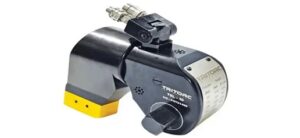
Medical office cleaning is a specialized form of janitorial service that differs significantly from cleaning in other types of environments. Strict observance of rules and procedures is necessary to guarantee the security and welfare of patients, employees, and guests. Here’s how medical office cleaning sets itself apart from other cleaning services:
Unique Challenges and Considerations
- Infection Control Measures: To stop germs from spreading, medical offices need to follow strict infection control procedures. Cleaning crews use hospital-grade disinfectants and follow specific protocols to sanitize high-touch surfaces and minimize the risk of healthcare-associated infections (HAIs).
- Patient Confidentiality: Medical offices handle sensitive patient information, making confidentiality a top priority. Cleaning staff must respect patient privacy and exercise discretion when cleaning areas such as examination rooms, waiting areas, and administrative offices.
- Specialized Training: Cleaning personnel in medical offices undergo specialized training to understand the unique cleaning challenges and safety protocols associated with healthcare environments. They are trained in the proper handling of biohazardous waste, the use of personal protective equipment (PPE), and compliance with OSHA regulations.
Key Differences from Traditional Office Cleaning
- Focus on Health and Safety: While traditional office cleaning primarily focuses on appearance, medical office cleaning prioritizes health and safety above all else. The goal is to create a clean and hygienic environment that supports patient wellness and recovery.
- Regulatory Compliance: Medical facilities are subject to strict regulations and standards set forth by governing bodies such as OSHA, CDC, and HIPAA. Cleaning personnel must adhere to these regulations to maintain compliance and mitigate potential risks.
- Specialized Equipment and Products: Medical office cleaning often requires the use of specialized equipment and cleaning products designed to meet healthcare industry standards. This may include HEPA-filtered vacuums, antimicrobial disinfectants, and color-coded cleaning tools to prevent cross-contamination.
The Importance of Office Cleaning in NYC
In a bustling city like New York City (NYC), where medical facilities serve diverse and densely populated communities, the importance of office cleaning cannot be overstated. NYC’s healthcare landscape demands meticulous cleaning and disinfection protocols to safeguard public health and maintain the highest standards of cleanliness.
- Urban Challenges: NYC’s dense urban environment presents unique challenges for medical office cleaning, including high foot traffic, limited space, and exposure to environmental pollutants. Cleaning crews must adapt to these challenges while ensuring thorough sanitation.
- Emergency Preparedness: NYC is no stranger to emergencies, from natural disasters to public health crises. Medical office cleaning NYC must be prepared to respond swiftly and effectively to urgent cleaning needs, whether it’s sanitizing after a flu outbreak or disinfecting in the aftermath of a disaster.
- Community Health: As a hub of healthcare innovation and excellence, NYC’s medical offices play a crucial role in promoting community health and wellness. Clean and hygienic medical facilities contribute to overall public health and instill confidence in patients seeking care.
Conclusion
In conclusion, medical office cleaning differs significantly from other types of cleaning due to its focus on health and safety, adherence to regulatory standards, and specialized training and equipment requirements. In NYC, where healthcare facilities serve a diverse and dynamic population, the role of office cleaning in maintaining cleanliness and infection control cannot be overstated. By understanding the unique challenges and considerations of medical office cleaning, cleaning services in NYC can play a vital role in supporting public health and safety.






